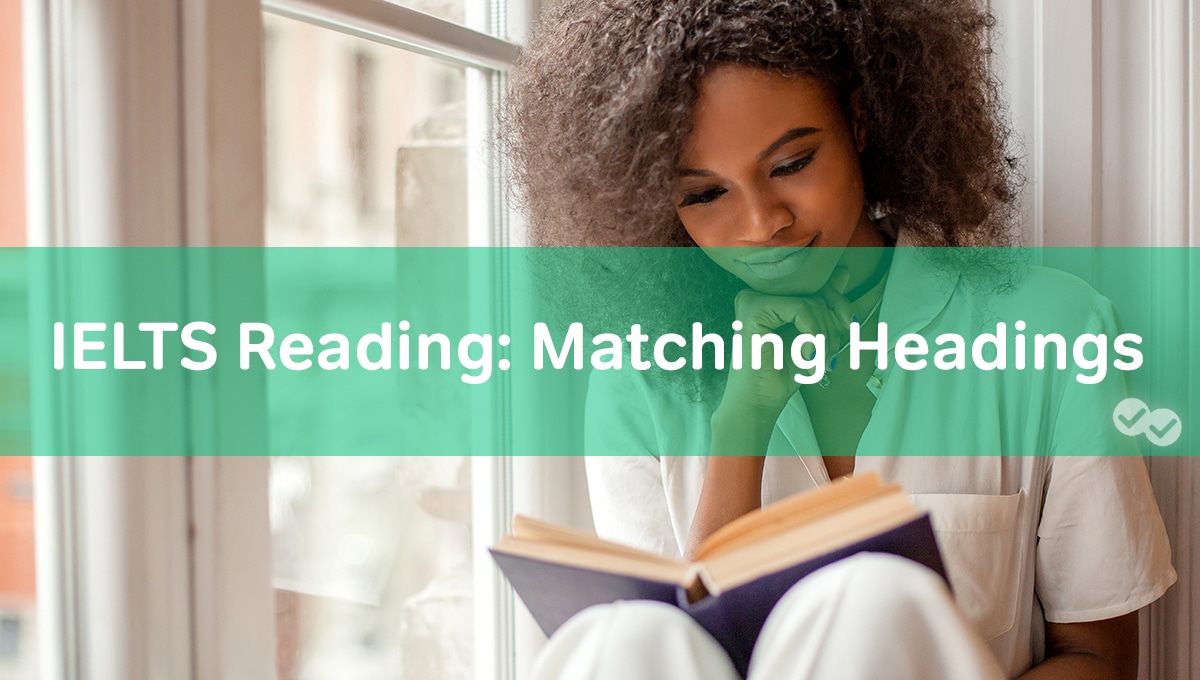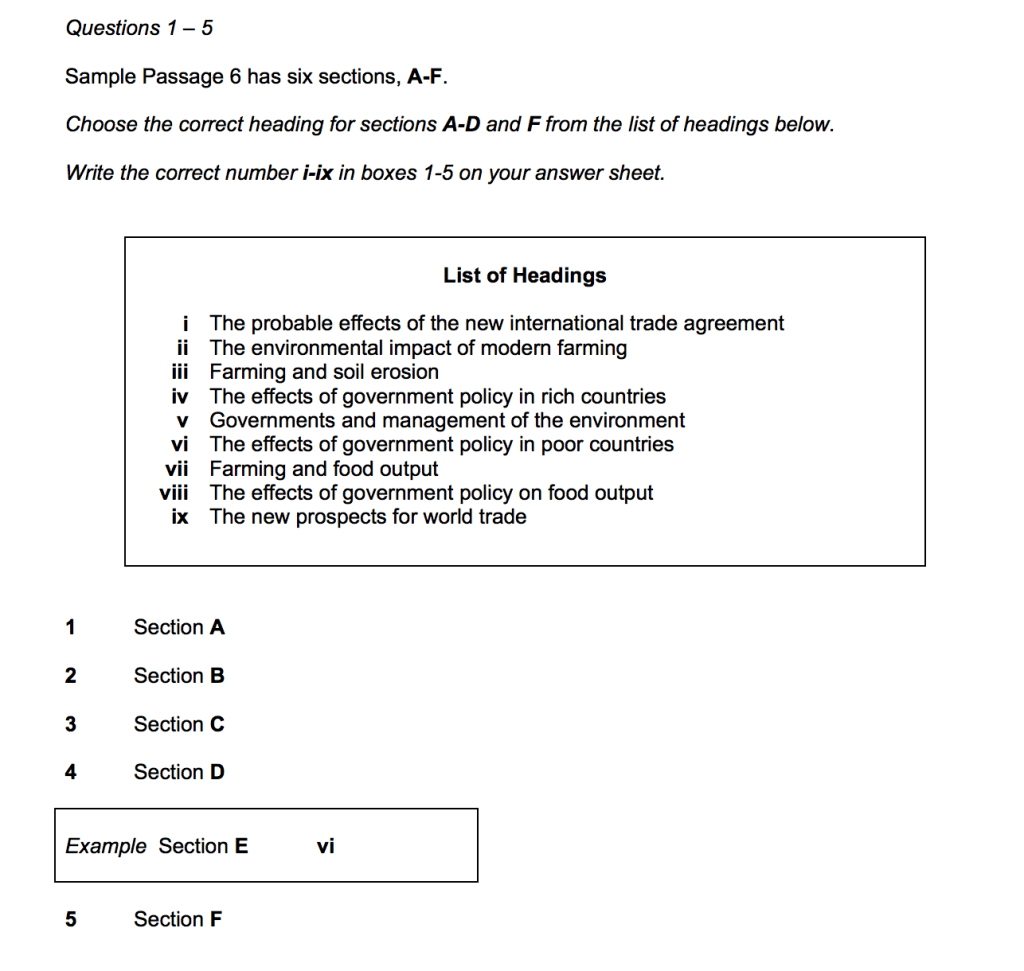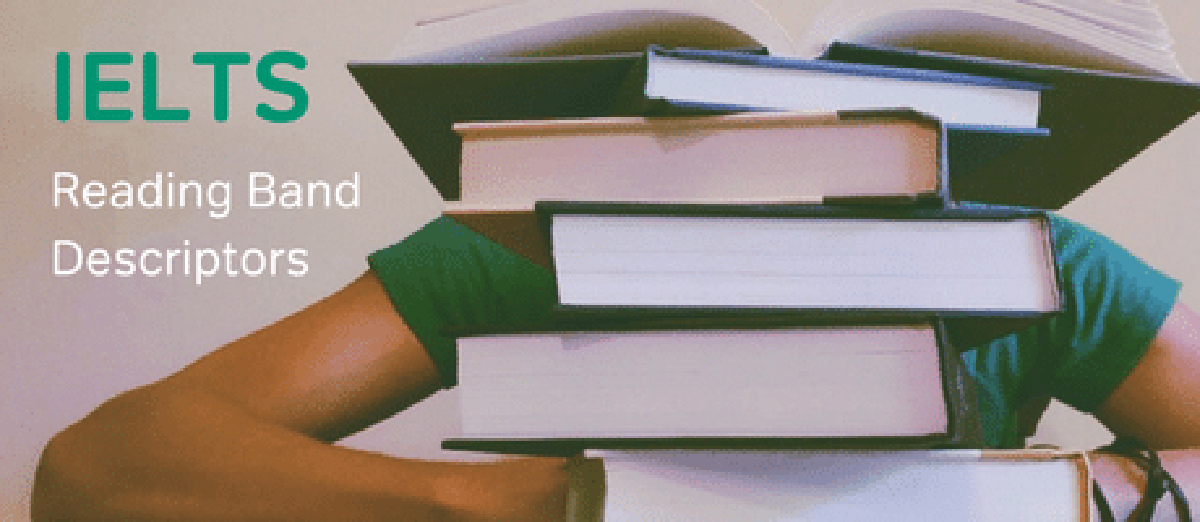I have already posted two blogs on how to tackle the various IELTS Reading question types, including one for Sentence Completion questions. This is the third in the series. Today, we will be looking at the questions that ask you to match headings to paragraphs. The aim is to give you some techniques on how to answer these question types quickly so that you can get through all the 40 questions in the allocated 60 minutes.

Matching Headings to Paragraphs Question Format
These questions test your ability to understand general information. The screenshot below is an example of a Matching Headings to Paragraphs question taken from one of the IELTS sample reading tests. In this sample test, you are asked to choose the correct heading for sections A-D and F from the list of headings provided and write the correct number i-ix in boxes 1-5 on your answer sheet. Note that in this example there are 9 headings listed but only 6 letters, including the example provided. Therefore, not all headings will be used.
How to Tackle
Below I have provided a step-by-step process to work through these questions. Hopefully by following these steps, you can learn to tackle these types of questions with ease and quickly move on to the next section:
- First, you should fully read the entire first sentence of paragraph A slowly and in detail. Often, the first sentence will give a summary of what the rest of the paragraph will discuss and will usually correlate exactly to one of the headings listed.
- When reading the first sentence of each paragraph, look for the nouns and adjectives that qualify the nouns.
Example: In the sample test mentioned above, the first sentence of paragraph A reads: “The role of governments in environmental management is difficult but inescapable.” I have put the nouns in bold.
- Once you have located the key nouns, go back to the headings list and skim through each to see if any of the headings have the same nouns or synonyms of those nouns.
Example: When I skimmed through the list, I noticed that heading v had similar words that corresponded to the nouns in the first sentence of paragraph A – “Governments and management of the environment”
- Next, skim the paragraph to obtain the general information of the paragraph. Remember think about the general information and not the detail. This should only take a few seconds. (See our tips and techniques for skimming IELTS Reading passages.) Does the heading that you choose cover all aspects of the paragraph? Hopefully yes!
- Finally, reread all the other headings listed to double check that none of the others mentioned seem like they would also work.
- Follow this step by step process for each paragraph.
Additional Tips
- If you have several question types for the same passage, always do the matching headings questions first, as the headings summarize the text and can help you scan the answers for other questions.
- Look at the example, if there is one. Don’t just cross it out. It may be the introduction, which organizes other headings.
- The example may be of the second or another paragraph – like above. Still use the heading to predict the headings next to it.
- Read the instructions! Check to see if you can use a heading more than once.
- Sometimes, there are more paragraphs than headings, so you will need to skim quickly.
- Once you have matched the headings, read them in order and see if the sequence makes sense.
These are some of the more easier question types in the reading exam, so you should aim to answer each of these questions in 1 minute, to leave you more time for the harder questions. With practice, this skimming technique to match headings to paragraphs will become second nature!
And click here to learn about the other IELTS Reading question types.







Leave a Reply